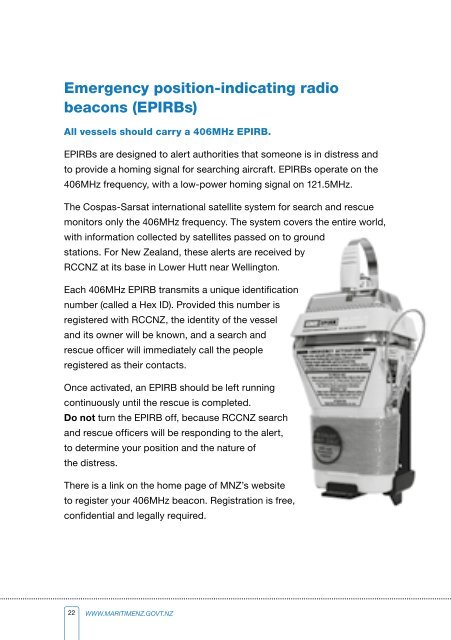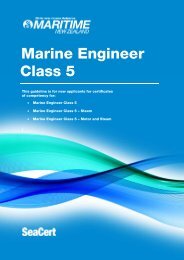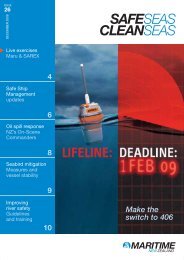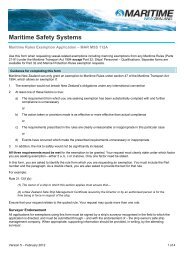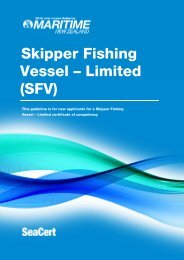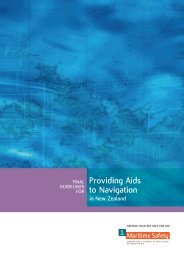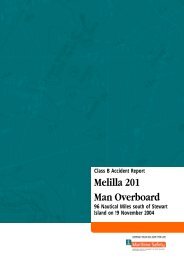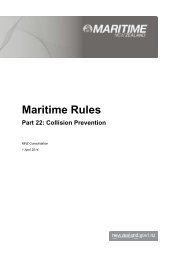404 error (missing web page or file) - Maritime New Zealand
404 error (missing web page or file) - Maritime New Zealand
404 error (missing web page or file) - Maritime New Zealand
You also want an ePaper? Increase the reach of your titles
YUMPU automatically turns print PDFs into web optimized ePapers that Google loves.
Emergency position-indicating radiobeacons (EPIRBs)All vessels should carry a 406MHz EPIRB.EPIRBs are designed to alert auth<strong>or</strong>ities that someone is in distress andto provide a homing signal f<strong>or</strong> searching aircraft. EPIRBs operate on the406MHz frequency, with a low-power homing signal on 121.5MHz.The Cospas-Sarsat international satellite system f<strong>or</strong> search and rescuemonit<strong>or</strong>s only the 406MHz frequency. The system covers the entire w<strong>or</strong>ld,with inf<strong>or</strong>mation collected by satellites passed on to groundstations. F<strong>or</strong> <strong>New</strong> <strong>Zealand</strong>, these alerts are received byRCCNZ at its base in Lower Hutt near Wellington.Each 406MHz EPIRB transmits a unique identificationnumber (called a Hex ID). Provided this number isregistered with RCCNZ, the identity of the vesseland its owner will be known, and a search andrescue officer will immediately call the peopleregistered as their contacts.Once activated, an EPIRB should be left runningcontinuously until the rescue is completed.Do not turn the EPIRB off, because RCCNZ searchand rescue officers will be responding to the alert,to determine your position and the nature ofthe distress.There is a link on the home <strong>page</strong> of MNZ’s <strong>web</strong>siteto register your 406MHz beacon. Registration is free,confidential and legally required.22 WWW.MARITIMENZ.GOVT.NZ


